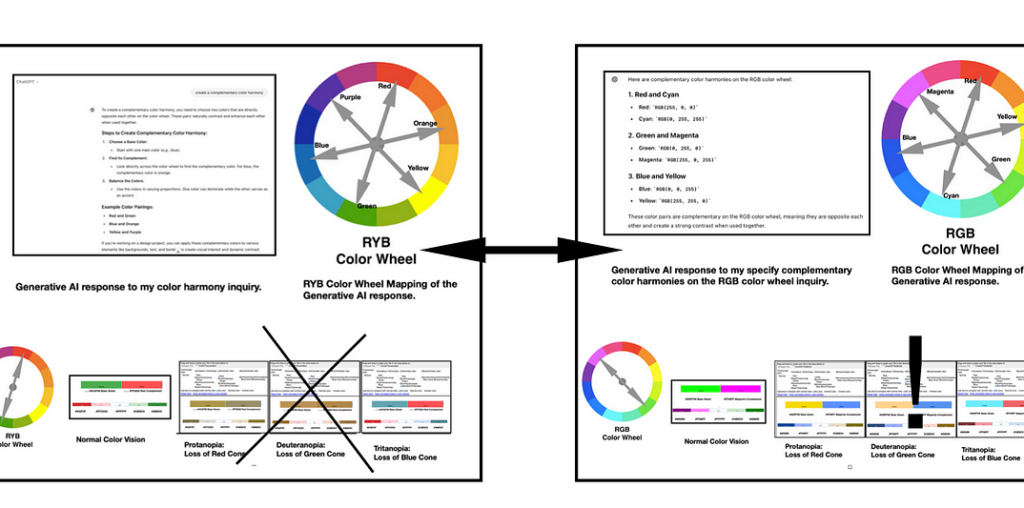In this writing, I explore how generative AI tools understand the concept of color harmony. I asked Open AI’s ChatGPT, Google Gemini, and Microsoft Copilot to “create a complementary color harmony”. Two color spaces frequently used to form the basis for color harmony are the traditional Red-Yellow-Blue (RYB) color space used in painting and the Red-Green-Blue (RGB) color space that is fundamental to display devices. For data visualization, the RGB color model is key in the interactive exploration of data color schemes. Do these Generative AI systems recognize the differences between RYB and RGB color spaces? I also explore how to handle the specific situation of finding an alternative complementary color harmony solution if the first Generative AI recommendation fails color deficiency tests. Before presenting my results, let’s review, in more detail, the concept of color harmony.
Color Harmony:
Color harmony is the process of choosing colors on a color wheel that work well together in the composition of an image. Like concepts in music, these harmonies are based around color combinations on the color wheel that help to provide common guidelines for how color hues will work together. Isaac Newton is credited with creating the color wheel concept when he closed the linear color spectrum into a color…

